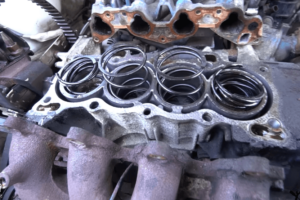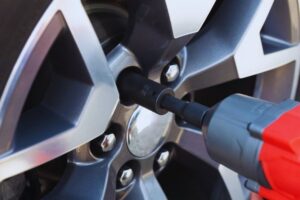Is this your first time visiting your DMV for your car’s annual registration? If so, are you familiar with car tags? To make your visit a bit less arduous, you would do well to read up on what car tags are.
Car tags are the stickers you receive every time you renew your vehicle’s registration. You need to place these stickers on your license plates at a specific location. This will allow the authorities to see them easily.
Read on to learn about car tags and why they are essential.
What Are Car Tags?
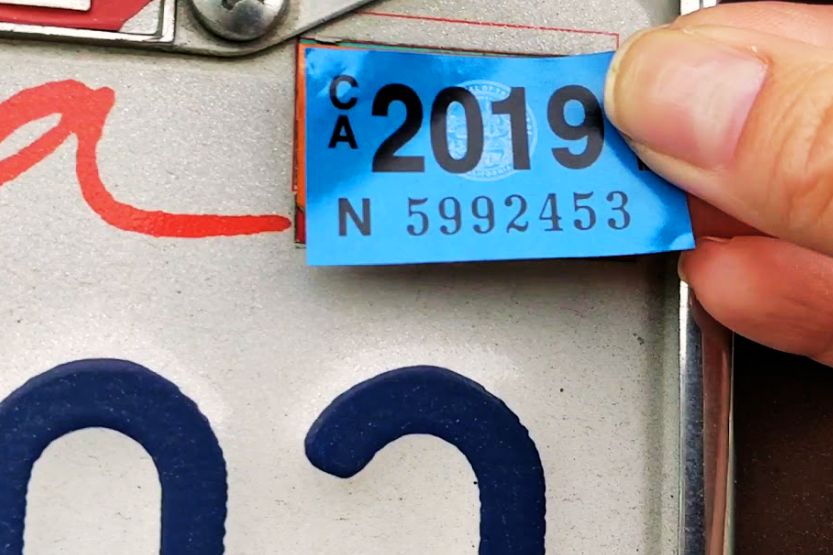
The car tag is the sticker the DMV gives you after renewing the vehicle’s registration yearly. Depending on your state’s DMV laws, you will apply the sticker on the license plate or windshield.
The car tags usually display the month and year of vehicle registration. The tags allow the authorities to check if a vehicle’s registration is already updated easily.
What Is a Car Tag Number?
The car tag number is the figure printed on the stickers. You can often see them printed using a large font so that the authorities can see them easily. The numbers represent the year of registration of the vehicle. This makes it easier for the police to identify vehicles not registered in the DMV.
Why Do You Need Car Tags?
You may find the extra steps to get updated car tags annoying and unnecessary in vehicle registration. However, they are pretty important. Here are the reasons why you need updated tags for your car:
1. Proof of Ownership
The car tags indicate that you are indeed the owner of the vehicle. You must provide the DMV with the title to get updated car tags.
You will also provide other paperwork that proves that you legally purchased/acquired the vehicle. Also, having updated car tags means you paid all the required taxes on your vehicle.
2. Requirement to Legally Drive a Car
When buying a vehicle, you must present a couple of documents to the DMV. That way, you can legally drive it on public roads.
These documents include your driver’s license, proof of insurance, and your car’s updated registration and car tags. Without these documents, you can no longer drive your vehicle anywhere.
3. Shows Proof That Your Vehicle Has Insurance
As mentioned earlier, you must show updated insurance proof to register your vehicle. If you can get updated car tags by connection, you also have an updated car insurance policy.
How to Apply for a Vehicle Tag Number
Types of Car Tags
In the United States, there are several kinds of car tags. This depends on the type of license plate you will be sticking them onto:
1. Standard Car Tags
These are the regular car tags that you affix on regular license plates. These license plates have no special features whatsoever. They are the ones that came with the car. On the other hand, if you bought your new car, it might only have temporary car tags.
2. Temporary Car Tags
Speaking of temporary car tags, these are the ones you receive from the dealership upon buying a brand-new car. You will use these tags until you register your vehicle with the DMV. You will also receive your permanent license plates and updated car tags.
3. Classic Car Tags
Once your car reaches a certain age, you can register it as an antique or a classic. Sometimes, the DMV will allow vanity plates that look era-specific to the car.
However, even though the license plate looks old, you still must use modern and updated car tags. This is if you still want to take your car out for drives.
What Are the Steps Involved in a Car Tag Renewal Process?

1. Have Your Vehicle Insured
Renew your car stag by following the steps below:
- Get insurance for your car. Ensure that you are under a policy that fulfills your state’s requirements.
- Bring your car’s proof of insurance and the title to the DMV.
2. Make an Appointment at the DMV
In most states, you can probably walk in and have your vehicle registered. However, due to the effects of COVID, your DMV might require setting an appointment beforehand. Some DMV offices would still like to limit the number of people inside their building at one time.
This means that they may not accept walk-in transactions. If you are registering the car from a different state, you may have to purchase an additional transfer permit.
3. Gather All the Necessary Documents
After setting an appointment, gather all the required official documents that you will need to avoid any delays. Here is a list of the things that you need to bring:
- A valid driver’s license
- Proof of insurance
- Deed of sale or title of ownership
- Proof of inspection (emission test results)
The other bits of documentation will depend on the laws of your state. However, the general steps remain the same. Aside from the abovementioned, check with your DMV to know the required documents.
Bring them so that you can get your new DMV car tags. For instance, New Jersey DMV requires six points of identification to get a driver’s license. This is also necessary to have your car registered.
4. Fill Out the Forms
Every state may have a different form you need to fill out to register your vehicle. To save time, download and print the form from your local DMV’s website. This way, you won’t spend too much time in line and filling out the form.
If you don’t have a printer, go to the DMV an hour or so before your appointment. This will give you sufficient time to fill out the forms.
5. Pay the Fees and Get Your Tags
It would be best to pay your registration in cash. That way, you can avoid having to swipe your card multiple times. Also, there is a distinct possibility that the card reader is not working. Make it a point to go to the nearest ATM first. Get some cash for the fees that you need to pay.
Check your local DMV’s website for an updated list of fees you need to pay. This will let you know just how much cash you need to bring. However, getting a bit extra is always good, just in case.
After paying the necessary fees, expect to be led to another window. This is where you can claim your updated registration and DMV car tags.
Again, what are car tags in America? Car tags are stickers placed on the license plate to indicate that your car has an up-to-date registration. This easily confirms the validity of your registration.
Why Do You Need Temporary Car Tags?
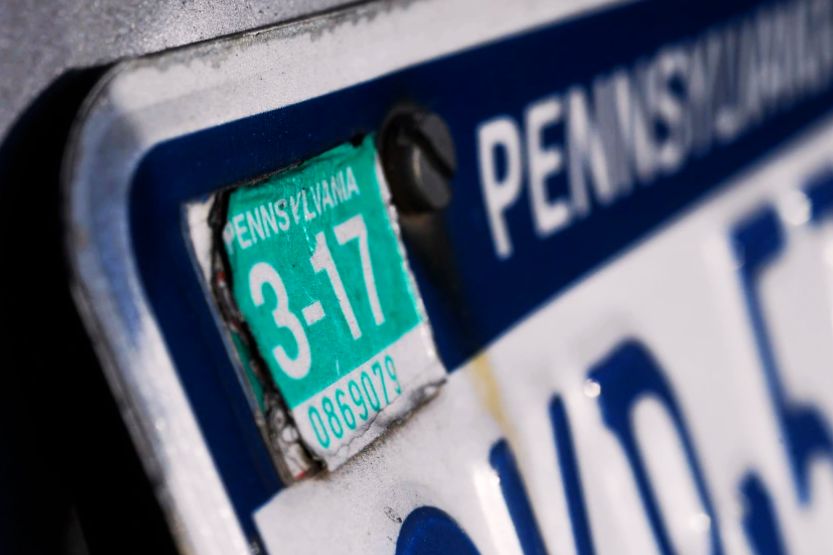
A temporary tag is a makeshift license plate that proves that you own and registered your vehicle. This will allow you to take it out on the road without fear of getting a ticket. This is a requirement while you are still waiting for your permanent license plates and tags.
There are many reasons why you would need temporary car tags, including:
1. Newly Bought a Brand New or a Secondhand Vehicle
It does not matter where you bought the vehicle, whether within your state or out of it. You will still need to use a temporary license plate and car tags while waiting on your new permanent plates. Depending on your state, the wait might take a week to a few months.
2. You Need to Take the Vehicle Downtown for an Inspection
Has your car not been registered for a long time already? Or has it been sitting on your property for a long time? Then you would need a temporary registration to drive it down to the DMV.
This is also good for when you have just finished restoring and fixing an old vehicle. In such a case, you need to get it inspected so that it can get a new registration.
This is not a requirement, but it would be better to have one. This is so you can avoid the hassle of explaining it to police officers.
3. Recently Moved to A New State
If you just moved across states and want to bring your trusty car, you must re-register it. During the process of re-registration, you will need to have a temporary car tag.
You can drive it around town while waiting for the new state license plates and tags. You will go through the same processes as importing a car from overseas.
How Much Does a Temporary Tag Cost?
Here’s the bad news. You must pay several hundred dollars to renew your car’s registration and new car tags. Some state DMVs charge more than others. However, some states determine the amount the owner has to pay based on key factors.
These include the vehicle’s weight, market value, or model year. On the other hand, some states charge a flat rate for any car.
What Paperwork Do I Need to Get a Temporary Tag?
Not all states have the same document requirements for renewing vehicle registrations and getting temporary car tags. The most common ones include the following:
- Certificate of ownership
- Application for temporary car tags
- Valid driver’s license
- Inspection results (emissions testing result)
- Loan documentation/release (if applicable)
- Proof of insurance
Some DMVs require that you provide multiple forms of ID and proof of address. Other than the driver’s license, you may need to show another government-issued identification and a couple of utility bills. The DMV requires this to prove your residency.
Frequently Asked Questions (FAQs)
Do Car Dealerships Provide Temporary Plates and Car Tags?
Some dealerships do, but they are not required. In states that do require them to, the dealership can initiate the registration process on your behalf. Once you have finalized the vehicle purchase, the dealership will handle the registration process for you. You do not need to do anything at all.
Are Handwritten Tags Legal?
Remember that some shady secondhand vehicle dealerships will print a fake “temporary license plate.” They will then draw the validity date using a marker. These kinds of plates are pretty illegal. The only way to get a legitimate temporary tag is through the DMV.
In Closing
Car tags are the small stickers you receive whenever you renew your vehicle registration. You will need to position these stickers on your license plates or windshield. That way, police officers can see them and determine if the car is correctly registered with the DMV.
Car tags might seem small and insignificant, but they are essential. So, the next time you renew your car’s registration, ensure that you also get these tags.
Read next:

![What Are the Gauges in a Car? [Car Gauges Explained] What Are the Gauges in a Car](https://roadsumo.com/wp-content/uploads/2021/10/what-are-the-gauges-in-a-car-150x150.jpg)
![Duracell Car Battery Review [Who Makes Duracell Car Batteries?] Duracell Car Battery Review](https://roadsumo.com/wp-content/uploads/2021/05/Duracell-car-battery-review-150x150.jpg)
![Loaner Car [What Is It? Tips for Buying a Loaner Car] loaner car](https://roadsumo.com/wp-content/uploads/2021/06/loaner-car-150x150.jpg)

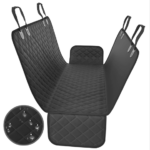
![What Is a Fender on a Car? [Fender Car Part Explained] car fender](https://roadsumo.com/wp-content/uploads/2021/07/car-fender-150x150.jpg)
